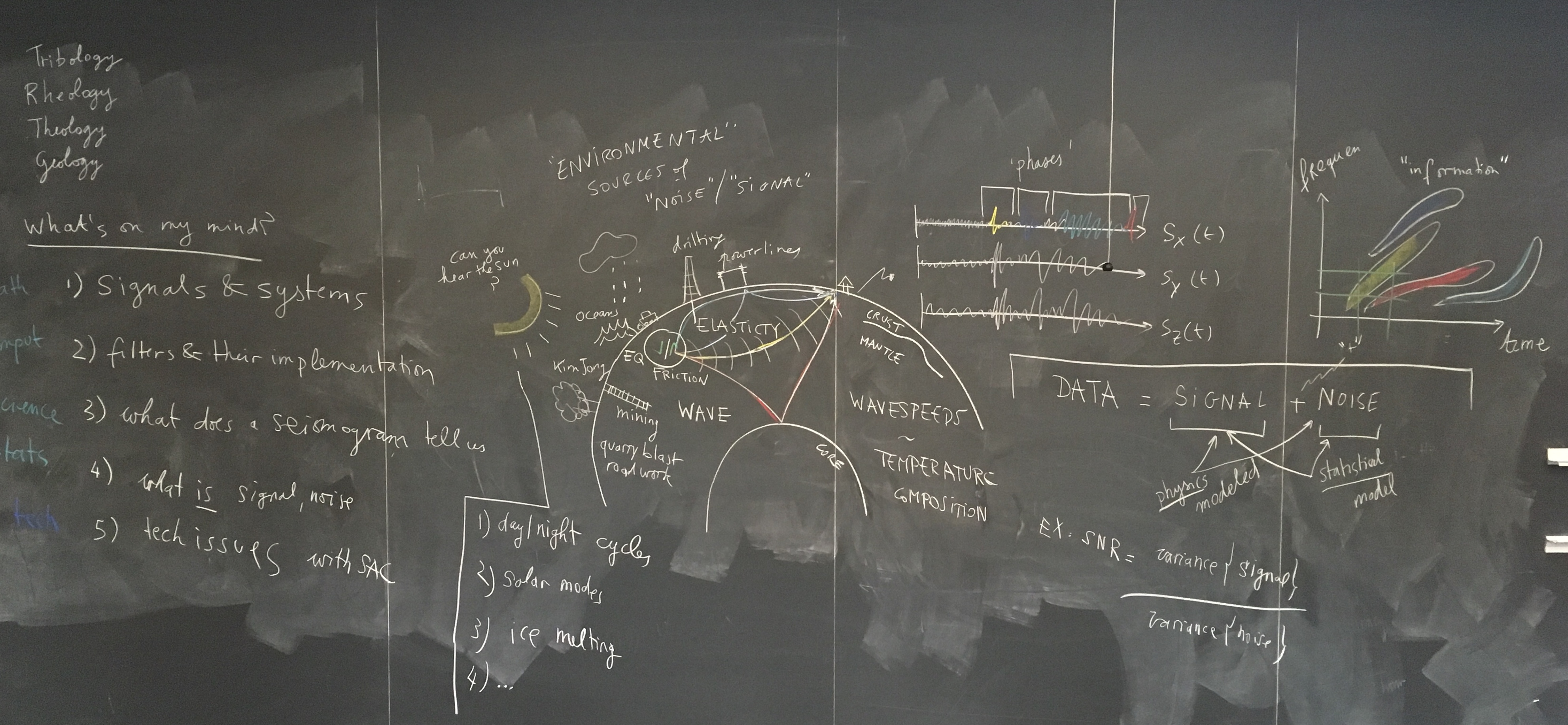|
We acquire and install geophysical instrumentation on
campus, training undergraduate students in its use via summer
internships and for thesis work. We continuously monitor the motion of
a material point on campus using the Global Positioning System in a
terrestrial reference frame, feed the data into a worldwide data
center used for tectonic geodesy, and study the time series with
students to uncover environmental (atmospheric humidity and total
electronic content, weather and seasonality, snow depth, frost-thaw
cycles, and so on), and possible anthropogenic effects. We establish a
campus quiet site to listen to Earth sounds using a three-component
seismometer, feed the data into a worldwide data center used for
global seismology, and teach students how to compare and contrast the
records with those recorded by an identical instrument already located
in Guyot Hall, to separate noise from the built and inhabited
environment (sonic booms, traffic, football fans, lawn parties) and
man-made sources (blasting, fracking, quarrying, nuclear testing) from
signals generated by the Earth itself (earthquakes, tides, free
oscillations, atmospheric pressure systems). The geodetic and seismic
stations are research-grade permanent additions to our ``campus as a
laboratory'' teaching environment. Digital data are archived in
perpetuity through the national data centers. Students trained will be
ready for careers in monitoring the Earth and its physical
environment.
|
